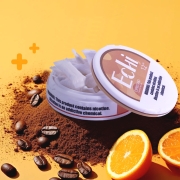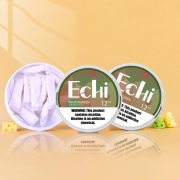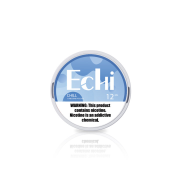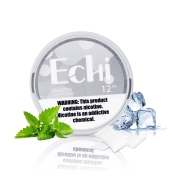Rolling Tobacco Bags: An Industry Guide for International Buyers and OEM Customers
Introduction
Rolling tobacco bags remain a staple within the smoking accessories sector, prized for their practicality, portability, and alignment with the preferences of consumers who roll their own cigarettes. As global demand for custom and eco-conscious products rises, these bags have evolved into more than just containers—they are brand statements.
For international distributors and OEM clients, understanding the intricate dynamics of rolling tobacco bag production—ranging from materials and manufacturing to branding and regulation—is essential for capitalizing on this expanding niche. This industry-focused guide offers a detailed look into emerging trends, the production pipeline, regional differentiators, and how to identify reliable suppliers for scalable growth.
1. Market Overview and Emerging Trends
The market for rolling tobacco bags is deeply intertwined with global shifts in smoking behaviors, particularly the rise of loose-leaf tobacco use. These bags not only serve a practical purpose but have become lifestyle accessories that appeal to environmentally conscious and design-savvy consumers.
Key trends shaping the current market include:
-
Sustainable Materials: With consumer preference leaning toward eco-friendly goods, manufacturers are increasingly using biodegradable fabrics, recycled textiles, and plastic-free components. These align with broader industry movements towards sustainability in smoking accessories.
-
High Customization Demand: OEM customers are seeking tailored solutions—white-label offerings, bespoke logos, adjustable compartments, and trend-forward finishes—to build brand identity and capture niche segments.
-
Compact, Functional Design: Today’s users expect intuitive layouts, odor-sealing zippers, moisture-protective linings, and minimalist aesthetics, making portability and protection top design priorities.
-
Premium Packaging Innovation: As competition intensifies, businesses are adopting value-adding features like humidity-lock pouches, vegan leather finishes, and magnetic closures to distinguish their offerings.
These trends suggest that success in this sector depends not only on production efficiency, but on adapting to the evolving lifestyle and environmental expectations of modern consumers.
2. Inside the Production Process
For buyers and OEM clients, a clear understanding of the manufacturing process provides valuable insight into quality control and customization flexibility.
Step 1: Material Selection
The foundation of any quality tobacco bag lies in its material. Common options include:
-
Genuine Leather: A hallmark of luxury products, prized for durability and tactile appeal.
-
PU and Polyester: Affordable, flexible, and easily customized—ideal for mainstream markets.
-
Canvas and Hemp Blends: Popular in sustainable lines for their biodegradable and natural aesthetic.
The supplier’s ability to source high-grade, ethically produced materials significantly impacts product positioning and brand perception.
Step 2: Prototyping and Design
In this phase, OEM partners work with suppliers to develop prototypes based on market positioning—whether minimalist and sleek or bold and artisanal. This includes selecting zippers, stitch patterns, lining types, internal compartments, and branding elements.
Step 3: Manufacturing Execution
Production may involve a mix of automation and artisanal craftsmanship. High-end bags are often hand-stitched to ensure authenticity, while mainstream production employs CNC cutting and industrial sewing machines for consistent output and scalable volume.
Step 4: Quality Assurance
A reliable manufacturer implements multi-point inspections to verify:
-
Seam strength and stitching consistency
-
Zipper and closure integrity
-
Moisture-sealing efficiency
-
Dimensional accuracy and finish uniformity
Brands focused on customer satisfaction invest in quality checks that go beyond surface-level inspection—especially for premium products targeting discerning clientele. For reference, quality-focused nicotine pouch production shares similar QA philosophies. Learn more.
3. Regional and Technological Differences
Understanding origin-specific advantages and technological variations can guide smarter sourcing decisions:
-
European Makers: Known for refined craftsmanship, these producers deliver elevated aesthetics and exceptional build quality, often with higher price points.
-
Asian Manufacturers: Offering cost-efficient solutions and high-volume capabilities, they excel in scaling and fast production—ideal for bulk OEM clients.
-
Local Artisan Brands: Focused on sustainability and uniqueness, these suppliers cater to niche, eco-conscious markets with handmade, limited-run designs.
Meanwhile, manufacturing technology continues to evolve:
-
Automated Precision Equipment: Ensures tighter tolerances, faster production cycles, and less material waste.
-
Moisture-Proof Linings & Magnetic Closures: Increasingly standard in mid-to-premium market segments.
A supplier’s technological sophistication often signals their ability to meet complex white-label or private-label requirements. For instance, Snuff Factory’s expertise in white-label nicotine pouch manufacturing readily translates to custom rolling tobacco bag production. Explore capabilities here.
4. Choosing the Right Supplier
Selecting a manufacturing partner goes beyond unit cost—it’s about consistency, service, scalability, and partnership. Evaluate suppliers on these criteria:
1. Industry Experience
Long-term players in the smoking accessory sector understand the performance needs of materials exposed to moisture, friction, and repetitive handling. Suppliers with experience in nicotine pouch production often bring parallel expertise to rolling tobacco bags. See available partners here.
2. Branding Flexibility
OEM and private-label buyers benefit from suppliers who support a wide range of customization: heat stamping, color matching, logo embossing, eco-friendly inks, and unique moldings.
3. Compliance and Certifications
International buyers should confirm that suppliers comply with ISO standards, environmental codes, and testing protocols relevant to the target market.
4. Scalability
Whether launching a boutique brand or scaling a mass-market product, a flexible supplier with diverse MOQ (minimum order quantity) options and multi-regional logistics ensures long-term viability.
5. Customer Communication
Effective coordination—from prototype feedback loops to post-sale support—is key for reducing lead times, avoiding production errors, and ensuring satisfaction.
5. Final Recommendations
Rolling tobacco bags offer a unique entry point into a high-margin segment within the smoking accessories industry. To capitalize effectively:
-
Focus on Function and Finish: Prioritize moisture control, durability, and elegant design.
-
Leverage White-Label and OEM Potential: Use supplier customization programs to differentiate quickly and build brand equity.
-
Stay Ahead of Trends: Incorporate eco-conscious materials and minimalist packaging to match evolving consumer priorities.
-
Partner with Experts: Collaborate with manufacturers like Snuff Factory, who offer deep category knowledge and flexible service models across product types. Browse their services here.
By aligning with responsive, capable suppliers and staying attuned to user needs, international buyers and OEM customers can position themselves as category leaders in the growing market for rolling tobacco bags.










Leave a Reply
Want to join the discussion?Feel free to contribute!